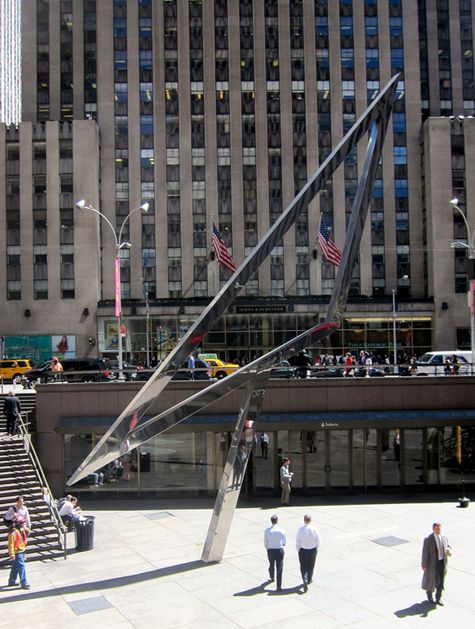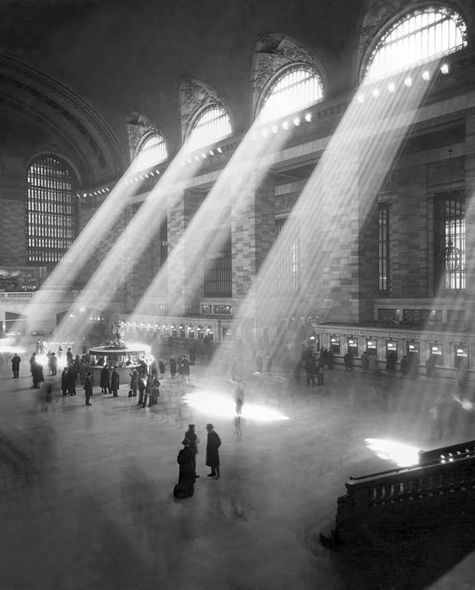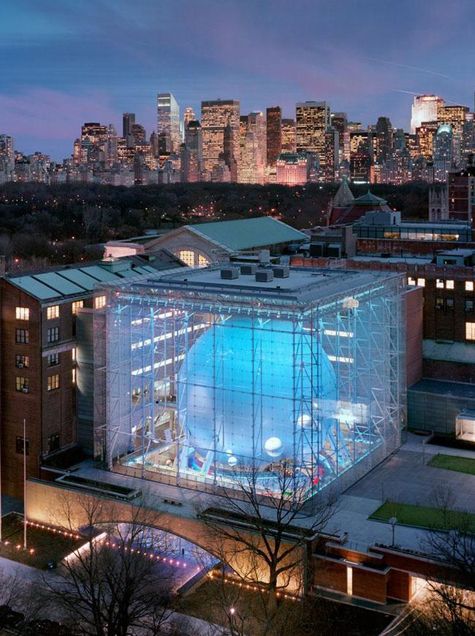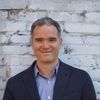
Sun Triangle, NYC / Flickr
The urban heat island effect, which causes cities to be 2-8 degrees warmer than nearby rural areas, is just one example of how the thermodynamics of cosmic light affect our built environment. As sunlight hits tar roofs and asphalt streets, it warms them. But as astrophysicist and best-selling author Neil DeGrasse Tyson explained at the 2017 Greenbuild in Boston, we can use green and white roofs to increase light reflection and reduce heat absorption. With a better understanding of the nature of light, we can make our cities not only more energy efficient, but also much more dynamic places.
For example, Tyson pointed to the Sun Triangle, a sculpture in a sunken plaza in front of the McGraw-Hill Building at 1221 Avenue of the Americas in New York City, created by Athelstan Spilhaus, a geophysicist and meteorologist (see image above). On solstices and equinoxes, different legs of the triangle line up exactly with solar noon. The Sun Triangle got Tyson thinking about “the city’s structure and form and how it interacts with the sun’s path.” This art work, he said, connects us to the beyond — the greater universe.
The Sun Triangle made Tyson think about the ancient Stone Henge, where the head stone was designed to perfectly align with the summer solstice on June 21. Tyson realized this Henge light also exists amid the grid of Manhattan. He calculated the exact day and time twice a year the sunset would pour down the avenues of Manhattan, flooding north and south sides of all streets with light. “It’s the sun at infinity — where parallel lines meet, and every street is illuminated simultaneously.” Since Tyson discovered and promoted Manhattan Henge, it has become a phenomenon, drawing hordes of people. “It has slowly gotten out of control,” he laughed.
Buildings can take advantage of the fascinating properties of light. In NYC’s Grand Central Station, curlicue wrought-iron grills on the windows create a giant pinhole camera that projects an image of the surface of the sun into the building. “These aren’t just circles of light; they are actually images of the sun. You can see the sunspots moving across the floor.”

Sun hitting Grand Central Station / Fine Art America
The Hayden Planetarium at the Rose Center for Earth and Space in New York City, which Tyson leads, also uses light to powerful effect, telling the story of our solar system. The planetarium is in a large sphere encased in a glass box. The sphere is a scale model of the sun, with the planets in our system revolving around it. “We used architecture to tell the story.” At night, the illuminated planetarium “calls to you, reaching beyond itself.”

Hayden planetarium / Flickr
Tyson admitted the planetarium has gotten criticism from some groups who claim it creates noxious light pollution. Tyson shot back that New York City, with its tight grid of tall buildings, is actually much darker when viewed from the night sky than sprawled-out places. “Suburbs everywhere have street lights. In Manhattan, the light from these are hidden by buildings.” Tyson noted that Tucson, Arizona, which is trying to reduce its light pollution both for birds and astrophysicists at the nearby Steward Observatory, “lead the world in dark sky legislation.”
Looking to the future, Tyson believes we can tap the unlimited energy of light from the sun to power our civilization. He called for more visionary thinking about the cities of tomorrow, bringing back the big dreams of the World’s Fair of the 1960s. We must look beyond to the universe to be more sustainable at home.
